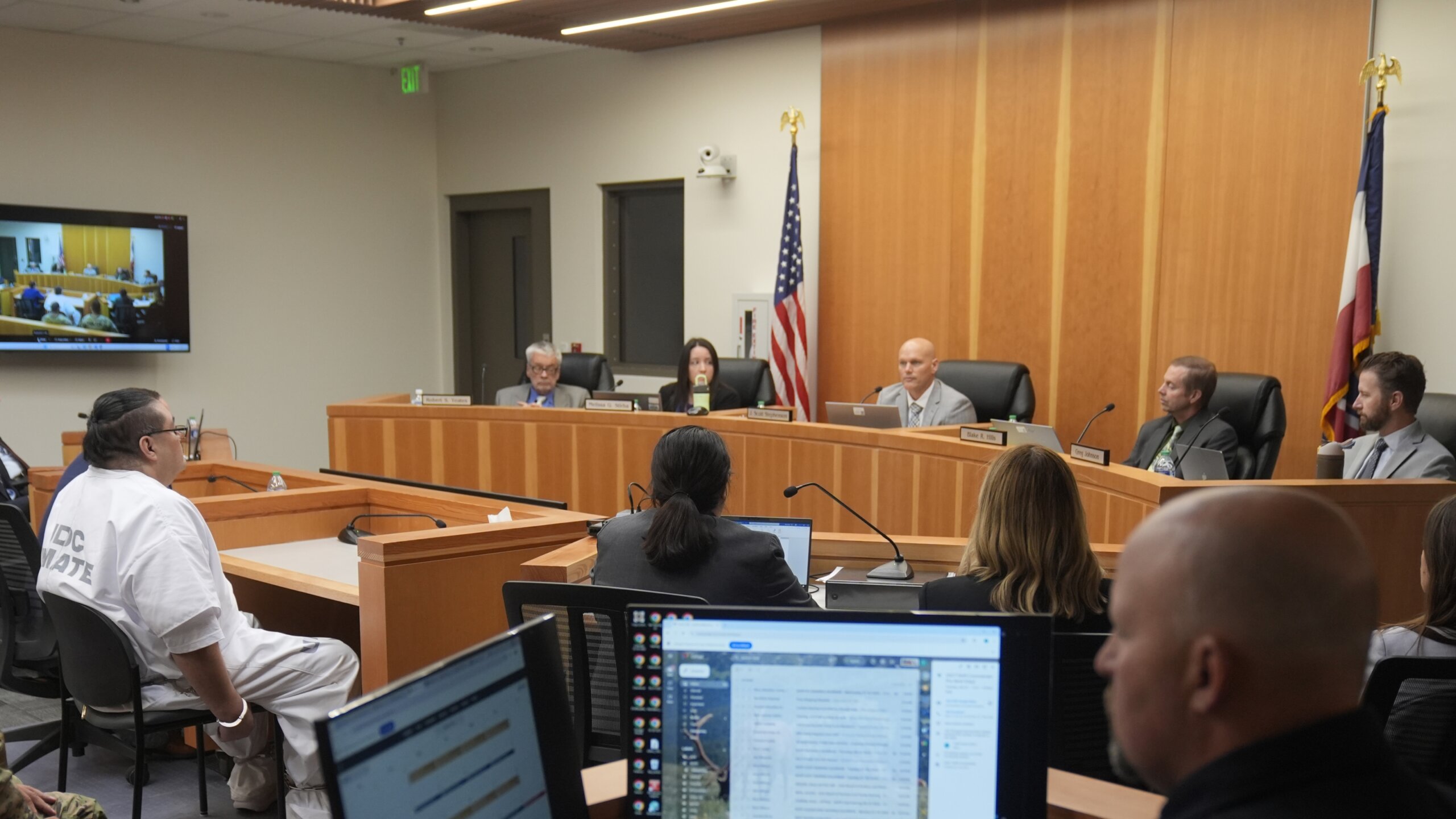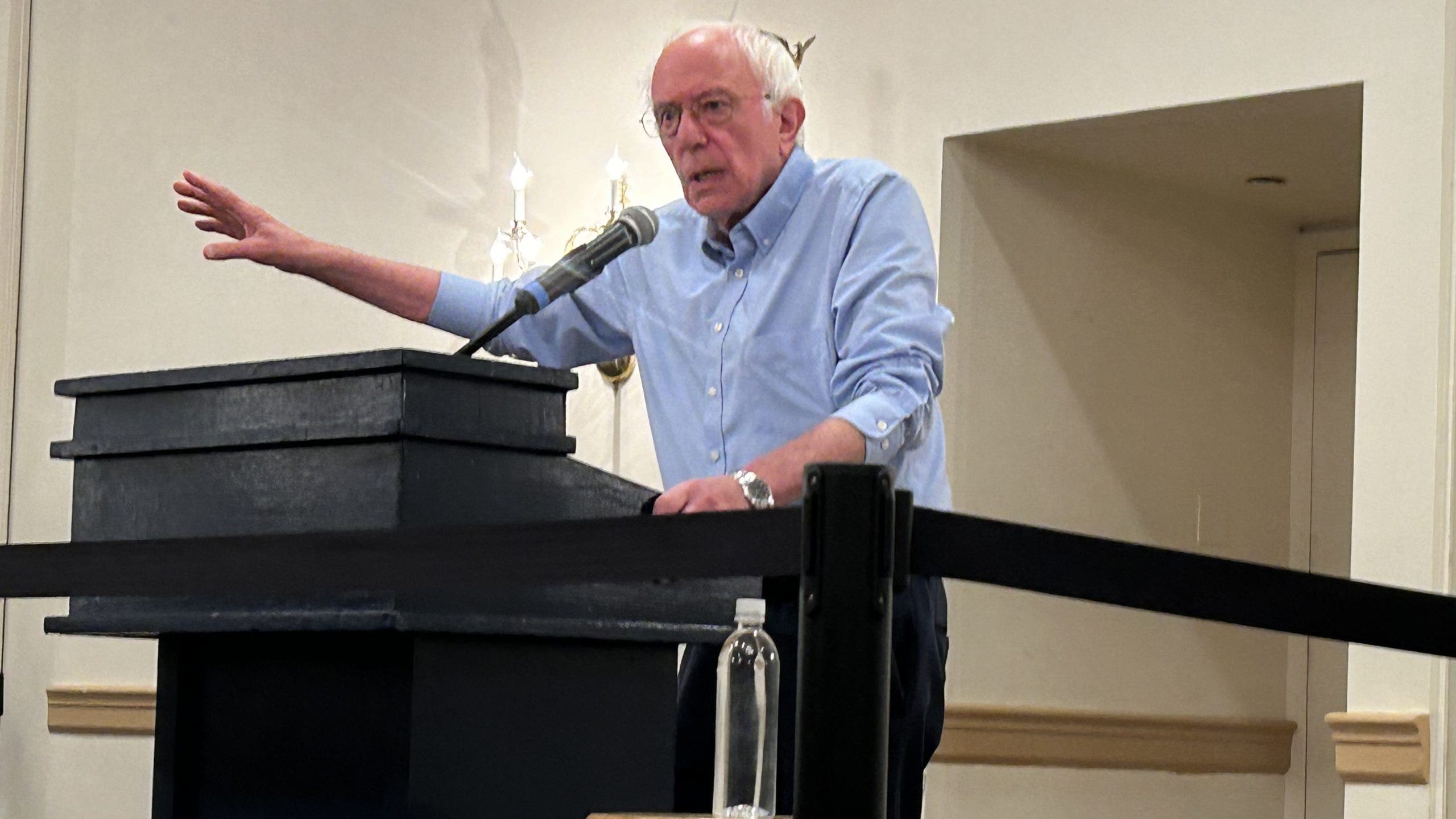Entertainment
Heavy new investments in the arts promise to lift Bunker Hill

With two major expansions of downtown Los Angeles cultural institutions in the works, Bunker Hill is primed to elevate its status as the region’s leading arts center even as the area around it struggles with persistent homelessness and post-pandemic losses of office tenants.
Bunker Hill will soon have the largest concentration of buildings designed by Frank Gehry in the world and promises to become a cultural center “like no other place,” the architect told the Los Angeles Times.
The Broad recently announced a $100-million project that will increase gallery space at one of the city’s most popular museums by 70%, and the Colburn School for performing arts just broke ground on a $335-million expansion that will include a mid-size concert hall — designed by Gehry — that is expected to be in near-constant use for events put on by students, professional artists and academics.
Gehry has been a key player in the decades-long comeback of Bunker Hill, a former residential neighborhood that is now home to cultural institutions, office skyscrapers, apartment towers and hotels. With the coming additions, Gehry said, Bunker Hill stands to surpass the vision he, museum founder Eli Broad and other civic leaders had in the 1990s when work got underway on Walt Disney Concert Hall as part of the government-led Grand Avenue Project to revitalize the neighborhood.
Planners at the time hoped to build on the appeal of the Music Center, which was built in the 1960s and served as a popular destination for arts patrons who typically drove in and out without stepping outside its boundaries.
A rendering of the future Broad expansion as viewed from Hope Street.
(Courtesy of the Broad. © Diller Scofidio + Renfro (DS+R))
“We have come a long way since the Dorothy Chandler Pavilion and the other Music Center venues opened,” Gehry said. “So much great energy has come to the fore.”
Bunker Hill is still unlikely to feel similar to cultural centers in other big cities, he acknowledged, and laughed off a reminder that Broad had suggested Grand Avenue could become L.A.’s version of Paris’ Champs-Elysees.
“Los Angeles cannot be compared to anywhere else in the world. It’s different than other cities,” Gehry said.
Bunker Hill is slightly removed from the homelessness and safety concerns that trouble the financial district just south of it, said John Sischo, who has worked in the real estate business downtown since the 1980s.
“Homelessness is a big problem that keeps office tenants from coming downtown,” he said. Safety issues are both “real and perceived.”
In the two decades before the COVID-19 pandemic, civic leaders and landlords pushed to elevate the financial district that Sischo recalled as a “doughnut hole” between Bunker Hill — with its highbrow cultural scene — and the booming new neighborhood of South Park near Crypto.com Arena and L.A. Live, where sports and entertainment ruled.
Thousands of apartments and condominiums were added to the financial district — followed by bars, restaurants and stores that thrived on the residents and office workers whose bosses took advantage of comparatively low rents in gleaming towers that were being upgraded by their owners.
The drop in street life from workers staying at home during the pandemic and continuing to work remotely has been a drain on the vibrancy and sense of security in the financial district, which is depressing office leasing and hampering the neighborhood’s comeback, Sischo said.
Falling office values have led to foreclosures on some prominent office towers, including 444 S. Flower St., which was owned by Sischo’s company, Coretrust Capital Partners.
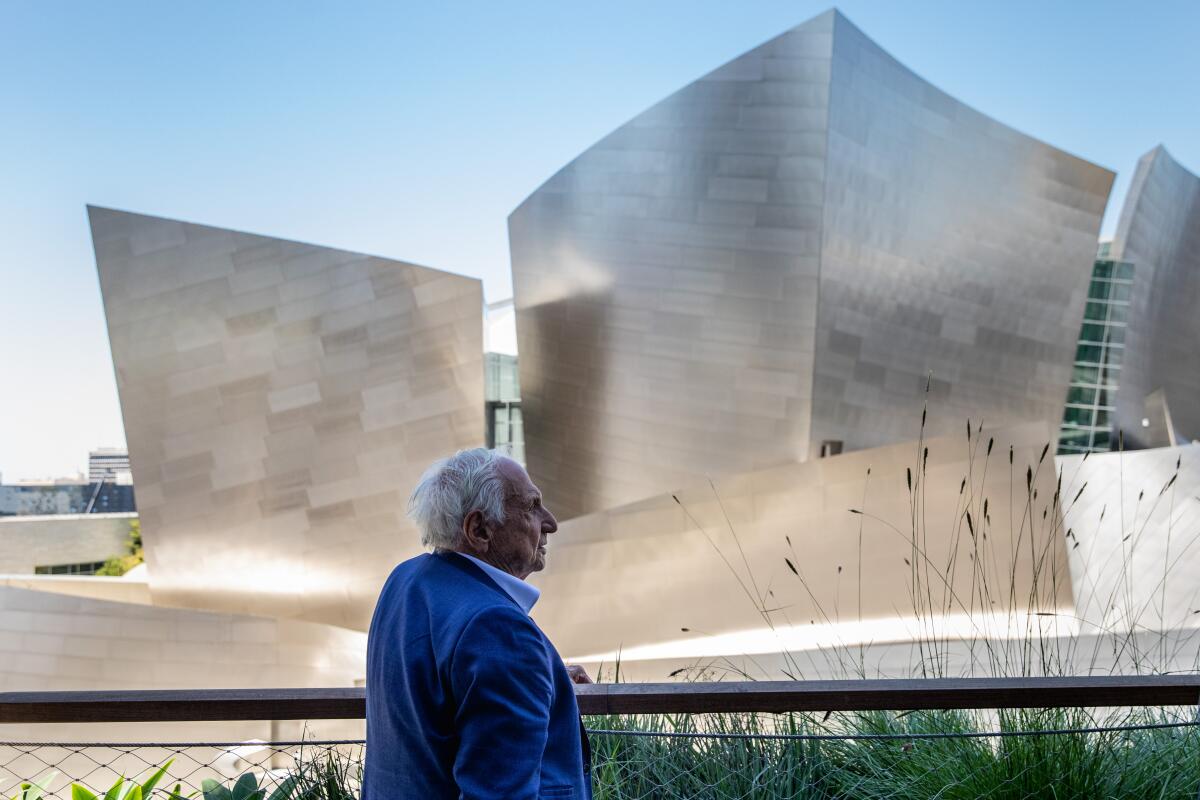
Acclaimed architect Frank Gehry stands in an outdoor lounge area of the bar Sed, part of Conrad Los Angeles, a luxury hotel across from Walt Disney Concert Hall, which Gehry also designed.
(Jay L. Clendenin / Los Angeles Times)
“Pre-COVID, it was really jelling,” he said of the financial district.
The most transformative addition to Bunker Hill in recent years was the Grand, a $1-billion hotel, apartment and retail complex designed by Gehry that stands across Grand Avenue from Walt Disney Concert hall, which he also designed.
“Now Disney has context,” Gehry said in 2022 on a balcony at the Grand overlooking the home of the Los Angeles Philharmonic. “For me, it all fits now. Disney Hall doesn’t look like an outlier.”
In the nearly two years since the Grand opened, its 45-story apartment tower has been nearly fully leased, owner Related Cos. said.
The Conrad Los Angeles hotel there is “outperforming the market,” Nicholas Vanderboom, chief operating officer of Related California, said, in part by “catering to growing interest in L.A’.s arts institutions.”
Spanish chef José Andrés operates restaurants at the Grand and more places to eat are coming in a part of the complex that has been dark since it opened, to the dismay of neighbors who have been waiting for long-promised retail venues on Grand Avenue. One of the features Gehry designed was space for stores and restaurants on the avenue and on terraces above that overlook the Disney Concert Hall, but it’s still mostly unoccupied.
Later this year, Andrés will open a Bazaar Meat, his high-end steakhouse that originated in Las Vegas, on the second level. Santa Monica Italian, French and & Moroccan restaurant Massilia will also open a branch on Grand Avenue this year, and other tenants will be announced in 2024, Related said.
The additions to the Broad and the Colburn promise to boost foot traffic on Grand Avenue, said Sel Kardan, president of the Colburn School, which opened on Bunker Hill in 1998 and has around 2,000 students.

The Broad Museum on Grand Avenue in downtown Los Angeles in April 2019.
(Jay L. Clendenin / Los Angeles Times)
Construction began recently on the expansion of the Colburn School that includes a mid-size concert hall Kardan expects to be in near-constant use for events put on by students, professional artists and academics. It is the third Gehry-designed building on Bunker Hill, which gives downtown L.A. the highest concentration of Gehry buildings anywhere, his firm said.
Colburn Center, as the addition will be called, will include a 1,000-seat concert hall with an in-the-round design meant to create intimacy between the performers and the audience. The hall will have an orchestra pit and a stage large enough to accommodate “the grandest works,” Kardan said, making it suitable for orchestra, opera and dance.
He expects the new hall will host more than 200 events a year at various times of day. The Colburn Center will also more than double facilities for the school’s Trudl Zipper Dance Institute, creating what the school called “one of the most comprehensive dance education complexes in Southern California.” The dance facilities will include a 100-seat theater for dance and four professional-size studios for dance instruction and rehearsal.
With the new addition, “there could be three or four performances going on on our campus on any given night,” Kardan said, a combination of educational performances, guest artists and events put on by local arts organizations.
The Colburn Center is set for completion in 2027. The Broad expansion should open a year later, museum President Joanne Heyler said, and add to street life on Grand Avenue.

A model of architect Frank Gehry’s design of an addition for Colburn School, a private performing arts school in downtown Los Angeles, which will make Bunker Hill the only place with three Gehry-designed buildings in close proximity, on January 31, 2024.
(Christina House / Los Angeles Times)
Attendance at the Broad returned to pre-pandemic highs of more than 900,000 annual visitors, she said, with a new daily record of more than 6,000 visitors set in March.
With the expansion,”we’re simply responding to the tremendous enthusiasm of our audience that is now consistent with pre-pandemic levels and and seemingly growing,” she said.
“I am under no illusion that downtown in general is free of challenges,” Heyler said. “We in the entire area have a lot to work on, but as a meeting point, a place to enjoy a cultural destination, our experience with the Broad is that things are vibrant. And I know that goes against the typical narrative of downtown.”
The Grand was “the next-to-the-last piece of the puzzle” for Bunker Hill, said landlord Christopher Rising, whose firm Rising Realty Partners owns two office buildings there. The final piece will be Angels Landing, he said, a $1.6-billion hotel-housing-retail complex set to rise next to Bunker Hill’s historic Angels Flight railway in time for the 2028 Olympics.
Rising laments that office attendance is still below pre-pandemic levels, especially among nearby government buildings that were packed with public employees who helped bring a sense of activity to Grand Avenue and other downtown streets.
“There are years of vision that are coming to fruition” on Bunker Hill, Rising said, “but the vision was heavily dependent on synergies with government workers. Without them, it’s slowing things down.”
More can be done to improve Bunker Hill, Gehry said, and the streets near Grand Avenue that are thick with parking lots are now ripe for development. The Colburn addition is going up next to the existing school on a former asphalt lot at 2nd and Olive streets.
“To keep upping the ante, we still have work to do,” Gehry said, such as “fixing” the Chandler Pavilion to make it a better venue for opera performances.
“There are also opportunities to connect down to the arts district, the civic center, and Little Tokyo on the east-west streets,” he said. “That is very exciting to me.”

Movie Reviews
What If Jessica Chastain and Anne Hathaway Had a Mother-Off, and We All Lost?
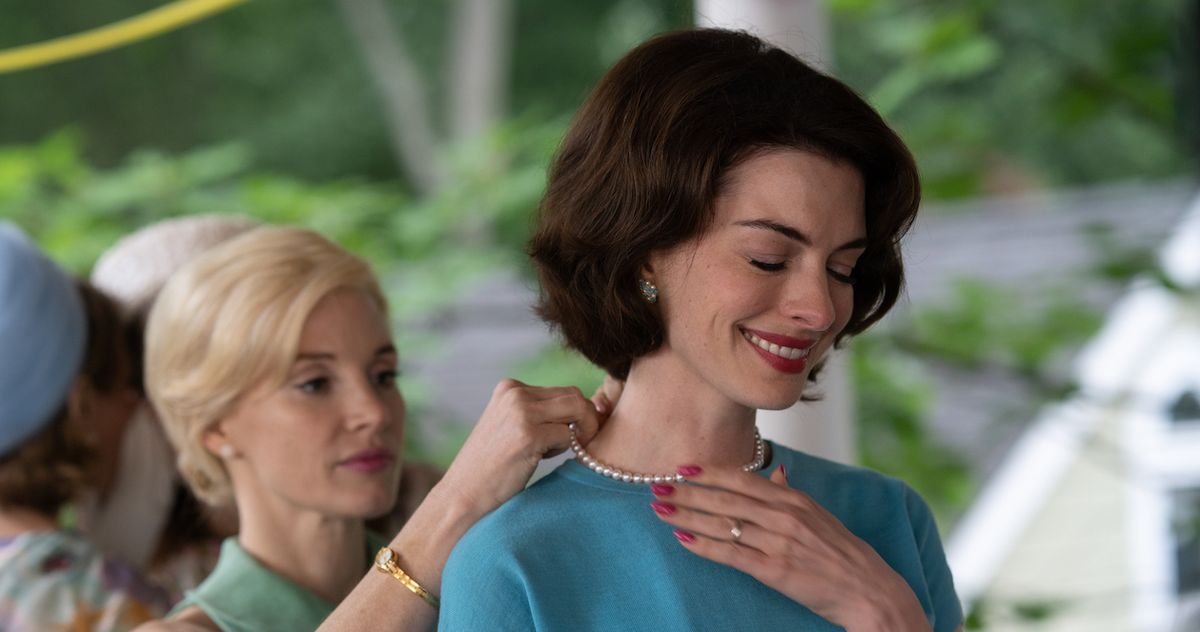
The strange case of Mothers’ Instinct.
Photo: Neon
There’s a new movie starring Jessica Chastain and Anne Hathaway out this week, which is normally the sort of thing you’d expect to have heard about. But, after its release in the U.K. months ago, Mothers’ Instinct is slipping into U.S. theaters with as little splash as an Olympic diver nailing a triple somersault tuck. The film, a thriller directed by Benoît Delhomme, is getting the treatment typically reserved for a disaster, which is a shame, because I’ve been dying to discuss it with someone, and that’s hard when no one has any idea what you’re on about. Mothers’ Instinct is, indeed, pretty terrible, and not in the so-bad-it’s-good sense, and yet there’s something strangely moving about it. It’s a poignant example of how what looks like rich material to actors can turn out to be lousy material for audiences. Mothers’ Instinct is a remake of a 2018 Belgian film adapted from a novel by Barbara Abel, and watching it, you can appreciate exactly why these two major actors signed on to star in it. Funnily enough, those same qualities go a long way toward explaining why the movie doesn’t work.
Mothers’ Instinct isn’t camp, but it’s close enough that if you squint, you can almost see a version of the film that tips into something broader. Of course, if you squint, you wouldn’t be able to appreciate how immaculately Chastain and Hathaway are costumed. They look incredible — not like two 1960s housewives, which is what they’re playing, so much as two people who keep switching outfits because they can’t decide what to wear to the high-end Mad Men–themed party they’re headed to later. As Alice, Chastain is styled like a Hitchcock blonde in pin-curled ash updos and cardigan sets, while as Alice’s neighbor and friend Céline, Hathaway is given a Jackie O. look that involves a shoulder-length bouffant, pillbox hats, and gloves. They’re cosplayers in a gorgeous, airless setting, adjoining houses on a street that might as well be floating in space, the husbands (played by Anders Danielsen Lie and Josh Charles) vanishing to work for long stretches. The artificiality of this intensely manicured re-creation isn’t to any particular end, which gives the whole movie the air of a Don’t Worry Darling situation in which no one ever wakes up to the twist, instead sleepwalking through a stylized dream of Americana.
In fact, while Alice is restless over having given up her job as a journalist to take care of her son Theo (Eamon O’Connell), and Céline gets ostracized by the community after the death of her son, Max (Baylen D. Bielitz), Mothers’ Instinct isn’t actually all that interested in the pressures of living under a repressive 1960s patriarchy. Instead, it’s about another time-tested theme, one that’s best summed up as: Bitches be crazy. The perfect sheen of its surfaces — Delhomme, who’s making his directorial debut, is a cinematographer who started his career with The Scent of Green Papaya and has since worked with everyone from Tsai Ming-liang to Anton Corbijn — is paired with a score that shrieks unease from the opening scene, in which Céline is thrown a surprise birthday party. The source of this suspense isn’t revealed until later, after Max takes an unintended swan dive off the porch and the women’s friendship is threatened by grief, guilt, and suspicion. Is Céline in mourning, or does she actually irrationally blame Alice for what happened while developing an alarming fixation on Theo? Is Alice right to be suspicious of her bestie, who’s unable to have another baby, or is she being paranoid because the mental illness that previously resulted in her hospitalization has returned? Is it odd that two feminist actors jumped to participate in a film that traffics so freely in unexamined stereotypes about women and hysteria?
Not, it seems, when the opportunities to stare coldly into space or look on in glassy betrayal are this good. I’m not trying to sound snide here — the characters in Mothers’ Instinct have no convincing inner lives at all, but the exterior work of the actors playing them is choice stuff. When Alice and Céline are getting along, Chastain and Hathaway nuzzle together supportively like long-necked swans. When things start to go south, Chastain opts for an aloof distance with stricken eyes, while Hathaway prefers a labored smile that drops as soon as she’s alone. Theirs is a brittle-off no one can win, but both try their hardest anyway. The effort reaches its crescendo at Max’s funeral, where Hathaway’s enormous eyes glimmer through the barrier of a black lace veil and Chastain tilts her face up so that the elegant tracks of past tears can gleam in the light. The scene ends with Céline collapsing in anguish while Alice rushes her tantrumming child out of the church, an explosion of drama that would be so much more effective if the movie had left any room for modulation instead of starting at 10 and staying there. Mothers’ Instinct gets much sillier before it ends, but given how little it establishes as its baseline tone, it doesn’t feel fair to say it goes off the rails. Rather, as Hathaway stares brokenly into the dark and Chastain tears apart her nightstand drawer in panic, what comes to mind is how great a set of GIFs this movie will make someday. That’s not much, but I guess it’s something?
See All
Entertainment
Tyler Perry calls out 'highbrow' critics, defends his fans: 'Don't discount these people'
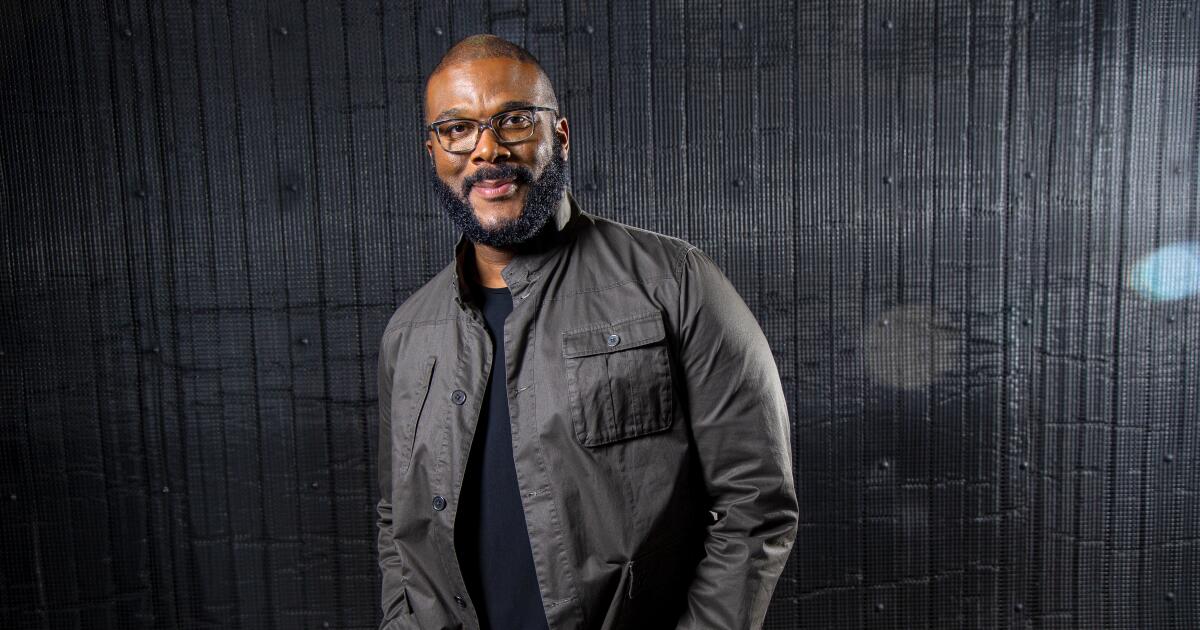
Tyler Perry’s last feature film earned a rare 0% on Rotten Tomatoes — a point that’s apparently of little concern to him.
The billionaire filmmaker, best known for his franchise character Madea, is far more interested in the opinions of his fans than those of “highbrow” critics, he said on the “Baby, This is Keke Palmer” podcast.
“For everyone who is a critic,” Perry said in the Tuesday episode, “I have thousands of — used to be — emails from people saying: ‘This changed my life. Oh, my God, you know me. Oh, my God, you saw me. How did you know this about my life and my family?’ So that is what is important.”
Critiques of Perry and his purportedly flat depictions of Black characters date back to his early directing days. Spike Lee, for one, in 2009 famously alluded to Perry’s work while complaining about the “buffoonery” in Black comedy. More recently, playwright Michael R. Jackson took his turn swinging at the movie mogul in his metafictional musical “A Strange Loop.”
In the number “Tyler Perry Writes Real Life,” Jackson’s protagonist — a Broadway usher who dreams of being a writer — denounces Perry’s oeuvre: “The crap he puts on stage, film and TV / Makes my bile want to rise!”
The song wasn’t born of any “personal vendetta,” Jackson told Washington Post Live in 2022. “It’s really about actually taking Tyler Perry’s work very seriously, because it’s often held up, often by Black communities, as sort of, like, the end-all-be-all of what one can do as a Black artist.”
“I just wanted to sort of problematize that and satirize that,” he said.
Upon Palmer referencing Jackson’s musical jab, Perry told the podcast host, “I know for a fact that what I’m doing is exactly what I’m supposed to be doing.”
When it comes to critics in general, he continued, it’s best to “drown all that out.”
“We’re talking [about] a large portion of my fans who are disenfranchised, who cannot get in the Volvo and go to therapy on the weekend,” he said. “So you’ve got this [Black critic] who is all up in the air with his nose up looking at everything, and then you’ve got people like where I come from, and me, who are grinders, who really know what it’s like, whose mothers were caregivers for white kids, and were maids and housekeepers.”
He added: “Don’t discount these people and say that their stories don’t matter. Who are you to be able to say which Black story is important or should be told? Get out of here with that bull-.”
Corey Hardict, who co-stars in Perry’s latest film “Divorce in the Black,” last week invoked a similar defense for the critical bomb: “I mean, the people love the movie and we do it for the people — that’s who I do it for. If the culture’s rocking with it, it’s all love. So it’s fine.”
Perry’s podcast comments have already garnered backlash online, with Preston Mitchum of the reality show “Summer House: Martha’s Vineyard” writing Wednesday on X, “Yes, because writing and producing a movie where a Black woman from a small town cheated on her husband, acquired HIV, then ended up physically disabled is absolutely the groundbreaking Black story we need to see.”
Mitchum’s post seemingly refers to Perry’s 2013 film, “Temptation: Confessions of a Marriage Counselor.”
Palmer defended Perry against other disparagers online, writing Wednesday on X, “The enemy isn’t Tyler it’s the system that makes it hard for multiple black artist[s] to shine at one time.”
“Tyler is not the gatekeeper of all black stories he’s just one creative who broke through the system,” she wrote. “Advocating for others to do the same is the fight, not hating Tyler for his work that many do love.”
Perry in 2019 celebrated the grand opening of his 330-acre Tyler Perry Studios in Atlanta. He created the complex with the hope of promoting cultural diversity in the film industry, he told The Times in 2016.
“Sometimes I drive around here by myself and think, ‘Is this too much, or is this what I’m supposed to do?’ ” Perry said. “The answer is obvious. When this fell into my lap, I said, ‘I have to do this.’ This is the endgame.”
Movie Reviews
Movie Review: Twisters – Kenbridge Victoria Dispatch

Movie Review: Twisters
Published 11:15 am Friday, July 26, 2024
1 of 3
Let me immediately cut to the chase (pun intended) and answer the question you’re all wondering. TWISTERS is a fun and entertaining summer blockbuster, but it in no way holds a candle to its predecessor TWISTER (1996). Still, the CGI is intense, the sound design is loud and immersive, and the lead performances — especially from Glen Powell — are sure to wow.
Following a horrible tragedy, meteorologist Kate Carter (Daisy Edgar-Jones) has spent years out of the storm chasing business. She now lives in the largely tornado-less New York City, using her innate understanding of storm systems to direct weather alerts. But when her old friend Javi (Anthony Ramos) begs her to join his privately-funded start-up, which is designed to use military-grade radars to learn more about tornadoes and save communities in Oklahoma, she agrees to give him a week of her time. It’s not too long before “tornado wrangler” influencer Tyler Owens (Glen Powell) enters the scene with his ragtag group of weather enthusiasts, creating a competition between scientific research and entertainment. Each group races to be the first on the scene, with Kate and Javi seeking to model the tornado and Tyler trying to get the most likes on social media. But can the two groups find a way to work together or will the competition be more vicious than the tornadoes?
I am admittedly judging myself for caring too much about a summer blockbuster’s plot, because that’s not really what any of us sign up for with these films. But the various encounters with tornadoes begins to feel slightly repetitive and creates pacing issues, making a two-hour film feel like its runtime. And for some reason, it seems like there is something missing when it comes to portraying the sheer terror of experiencing F5 tornadoes, unlike the original film; the main set pieces were not as memorable.
The film does little to make you care about whether the characters live or die, relying on Glen Powell and Daisy Edgar-Jones’s chemistry and natural charisma to do the heavy lifting. The second Powell steps out of his gigantic truck, with his cowboy hat and belt buckle sparkling in the sun… sorry, I just lost my train of thought… and that’s what TWISTERS is hoping. Powell’s magnetism is sure to knock you off your feet and distract you from the film’s middling plot. And while Edgar-Jones’s performance is more muted, due to her character’s battle with PTSD, she brings an important level of humanity to the film and a character to both see yourself in and root for. More than that, her chemistry with Powell is off the charts and will certainly leave you wanting their relationship explored more in a sequel. The supporting characters are not given much to work with and as such, don’t really engender much concern when they are in deadly situations.
One element of TWISTERS I liked more than TWISTER is it showed the emotional and financial toll tornadoes ravage on communities. Of course, that is an element of the first film, but TWISTERS does a great job showcasing the speed in which tornadoes can overtake and devastate a community, both in loss of life and loss of property. This, juxtaposed with the “fun” in chasing storms brings a real human element to the film. I also want to give a shoutout to the movie not having any sad animal scenes (apart from a possible run-in with a chicken). So for all of you sickos excited to see another flying cow, this isn’t for you.
TWISTERS is the exact kind of movie you need to see in a theater so you can get the full experience. Where else can you admire the cinematography, get immersed in the sound design, and lose yourself in Glen Powell’s cowboy hat and million dollar smile? I saw it in a Dolby theater and was blown away.
There is no end credit scene.
My Review: B
-

 World1 week ago
World1 week agoOne dead after car crashes into restaurant in Paris
-

 Midwest1 week ago
Midwest1 week agoMichigan rep posts video response to Stephen Colbert's joke about his RNC speech: 'Touché'
-

 News1 week ago
News1 week agoVideo: Young Republicans on Why Their Party Isn’t Reaching Gen Z (And What They Can Do About It)
-

 News1 week ago
News1 week agoIn Milwaukee, Black Voters Struggle to Find a Home With Either Party
-

 Politics1 week ago
Politics1 week agoFox News Politics: The Call is Coming from Inside the House
-

 News1 week ago
News1 week agoVideo: J.D. Vance Accepts Vice-Presidential Nomination
-

 Movie Reviews1 week ago
Movie Reviews1 week agoMovie Review: A new generation drives into the storm in rousing ‘Twisters’
-

 World1 week ago
World1 week agoTrump to take RNC stage for first speech since assassination attempt
